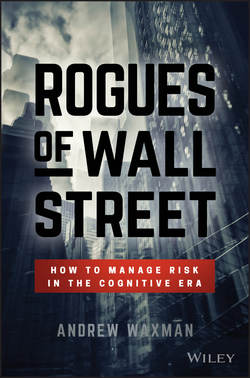Читать книгу Rogues of Wall Street - Waxman Andrew - Страница 10
На сайте Литреса книга снята с продажи.
CHAPTER 2
The Rogue Trader
The Crime of Rogue Trading
ОглавлениеSo what exactly is the Rogue Trader's sin? Traders are clearly paid by their employers to take risks. What exactly is wrong with the risks that the Rogue Trader takes?
Simply put, trading floors require traders to be supervised. Rogue Traders do everything they can to evade supervision. Rogue Traders tend to operate on trading desks responsible for facilitating client trades and, as such, are generally barred from taking risks with their own trades. Their clients tend to include institutions such as asset managers that buy and sell stock in bulk. A client may, for example, want to sell $1 billion worth of stock in a certain company. The job of the trader is to achieve the best price for his client. This requires speed and secrecy to prevent buyers from bidding the price down once they become aware of the seller. Clients pay their bankers large fees to make sure this happens. As a result, at a large investment bank, trading books of some of the traders working in institutional equities can be in the billions of dollars buying and selling the stocks in which they make a market for their customers. For such traders, there are huge levels of potential risk unless their positions are hedged – that is, matching of long positions (loss in market value hurts them) with short positions (loss in market value helps them) in equal amounts. Profit comes, then, not from changes in market values – they should be market neutral – but from the commissions and financing fees from the large trades they execute. Such traders are not supposed to make a lot of money in betting on the direction of a particular stock or group of stocks. There is too much risk involved for that.
In addition, in a typical investment bank, traders are generally limited to trading securities strictly within the scope of their “trading mandate.” An equity trader's mandate should be generally restricted to trading equities, a fixed income trader to certain fixed income products, and so on. A broad mandate is then defined down to a specific set of limits that a trader should trade within in order to restrict the potential losses that can be suffered from his book on any given day. This is called his VaR (value‐at‐risk) limit.23
Without limit management, given the number of traders and the size of their trading books in a large investment bank, banks potentially face catastrophic losses on any given day. Limits tend to be defined based on the level of experience and seniority of the trader and act to limit the potential size of a trader's profit for a day, a week, or a year, as well as his potential loss. Any trader who wishes to increase his profit opportunity can theoretically do so by increasing or exceeding his trading limits. While a Genius Trader may prevail upon management to assent to a temporary or permanent limit increase because he or she is a genius (discussed further in Chapter 3), no such privileges are likely to be extended to ordinary folk, the ranks of which are populated by the potential Rogue Trader. Such a trader will only be able to exceed his trade limits by deception – in other words, without authorization. He does this by various illegal methods of falsification and wrongful concealment of his tracks and activities. One can now see why this is such a serious offense and why it is labeled rogue trading. No trading operation can survive without defining such limits and requiring traders to stay within them unless otherwise authorized to do so. Trading without authorization is the source of the Rogue Trader's crime and is punishable with jail time, depending on the extent of the losses he causes to his employer. These can be very large when things go badly wrong because he is trading unsupervised as well as unauthorized.
23
VaR (value at risk) is the term given to risk‐management modeling methodologies developed in investment banks. The models developed under this methodology are intended to indicate the amount of value that would be lost in a day under given trading scenarios. The scenarios are normally developed on the basis of historical precedent.
